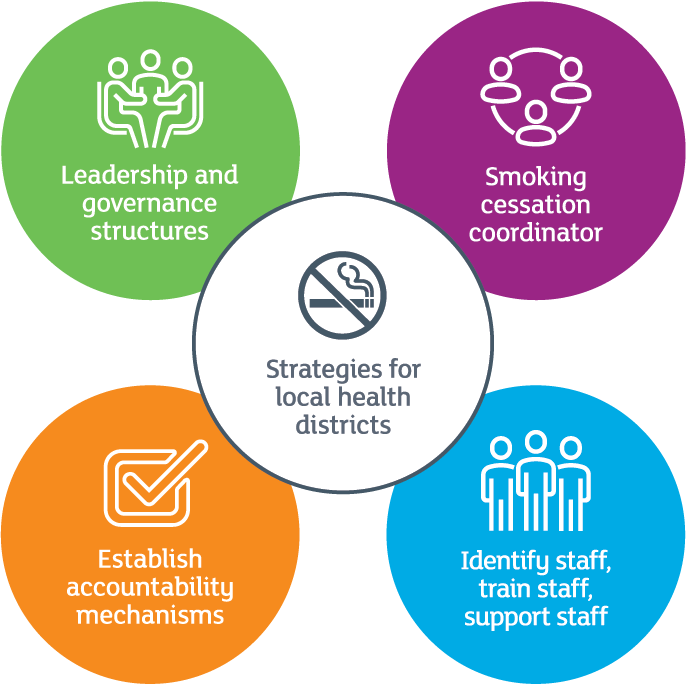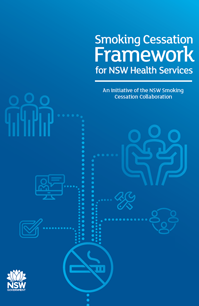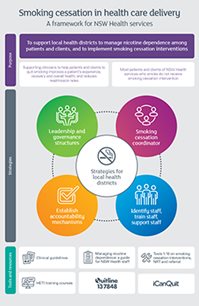Effective smoking cessation interventions involve brief assessment and advice, nicotine replacement therapy (NRT) and referral to a smoking cessation service, such as the NSW Quitline. This kind of brief intervention is known as 'The 5As':
- Ask
- Assess
- Advise
- Assist
- Arrange
It is important for LHDs to make smoking cessation intervention part of treatment and care for all smokers.









